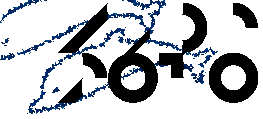
|
Computer Science Dep.
Aarhus University 15-17 August 2010 |
| HOME | PROJECTS | SCHEDULE |
|
KTH - Wheelie-eThe purpose of Wheeli-e is to improve accessibility for the mobility impaired, in a strive to better integrate the target group into society. This year’s theme of the project was sustainable cooperation. Therefore the concept was also an attempt to make the target group collaborate together, relying heavily on the target group as a basis for the information accessible in Wheeli-e. Focusing on the design process, our group maintained a close collaboration with the target group during the whole project. Today wheelchair users stand before major difficulties exploring new environments. Travelling to new areas, visiting new places is often demotivating because of this. Our goal was to try to eliminate these problems by helping users find accessible places all over the world more easily. The concept Wheeli-e lets the user rate different places and makes this information available for other users. The end result was a interactive html prototype made for smart-phones.Project web site Project presentation (online after AaDP 2010) Participants:Anna SandbergSara Sjödin Fahad Walliullah Björn Thuresson, Supervisor UNISI - Flower LampTHE ISSUEIn the effort of contrasting global warming people are getting familiar with energy saving and sustainable lifestyles that reduce the carbon footprint in the world we live. More and more devices use renewable energy but the most of this devices are personal and stand-alone ones. So far one promising enabling technology, the GRID, allow people to be connected and in the future even to redistribute clean energy accumulated in personal contexts. THE PROPOSAL In our vision Flower Lamp is a mean that allow each user to enter the energy network to become not just a consumer of green energy distributed by intelligent devices but also an active actor in the energy network. The user has the chance to enjoy the benefits of renewable energy consumption and production in a simple and not invasive way. Flower Lamp is an information appliance that decorates the house and create an experiential process of energy consumption by providing a real time-feedback of how energy produced within the GRID flows. Flower lamp has the shape of a plant whose leaves and flowers take energy from the sun and the wind and let people recharge little devices (mobile phones, mp3 players, etc...) or store the energy produced in the GRID. It has been proved that hen people have a consumption gauge in cars and other devices they start behaving so to save on energy. To stress this issue, in the Flower Lamp vase the lights are set to give a visual feedback of the power consumption in the network, while the lights in the leaves become green when clean power is produced. OUR EXPECTATIONS The aim of Flower Lamp is to let people see how easy it is to make a single step in the direction of energy saving. Flower lamp is simple, ready to use and shows how big can be each single step. We believe that once a single user has discovered the benefits of the renewable energy he can be the main player in the process of spreading the culture and awareness of energy saving. The existence of an open network then could support cooperative behaviours and make each user become an actor in the energy saving community. Project presentation (online after AaDP 2010) Participants:Martina ManciniCarlotta Palazzesi Lucia Burroni Sarvo Penza Guido Mengoni Antonio Rizzo, Supervisor Maurizio Caporali, Supervisor Andrea Alessandrini, Supervisor Monica Milani, Supervisor AU/CS - Experiencing the Danish National ParksEnjoying nature is a popular activity for many in Denmark (and around the world). Yet, for others venturing in nature alone as a form of entertainment or pastime may seem unattractive or even boring especially for the younger generations. Therefore, in the Designing Interactive Technologies course at Aarhus University, we focused on tackling the problem of making teens, tweens and young families more aware and interested in the experiences nature has to offer.The newly formed Danish national parks are an interesting application domain for our designs as they are in very active development and have attracted media attention due to the start-up phase they are in. Furthermore, the national park situation in Denmark is quite unique as they are less restrictive and more open by also being a place to live. Throughout the course, we have worked in groups on individual design projects, two of which will be presented here: - Surprise Trips: A system to augment the natural experience of exploration in nature by building on the theme of surprises as well as utilizing physical icons both as representation of users’ interests and as notification tokens to alert users when they are within proximity of a surprise - Hot or Cold: A mobile application for sharing positive nature experiences with the user's own social network. Inspiring, social and non-informative visualisations of recommended places attract new national park visitors both via online media and in physical places like museums. Project web site (updated shortly) Project presentation (online after AaDP 2010) Participants:Lisbet AndersenRaghid Kawash Matthias Korn Pirjo Näkki Wel Rachid Susanne Bødker, Supervisor Erik Grönvall, Supervisor |
||||||
gronvall (at) cs.au.dk |